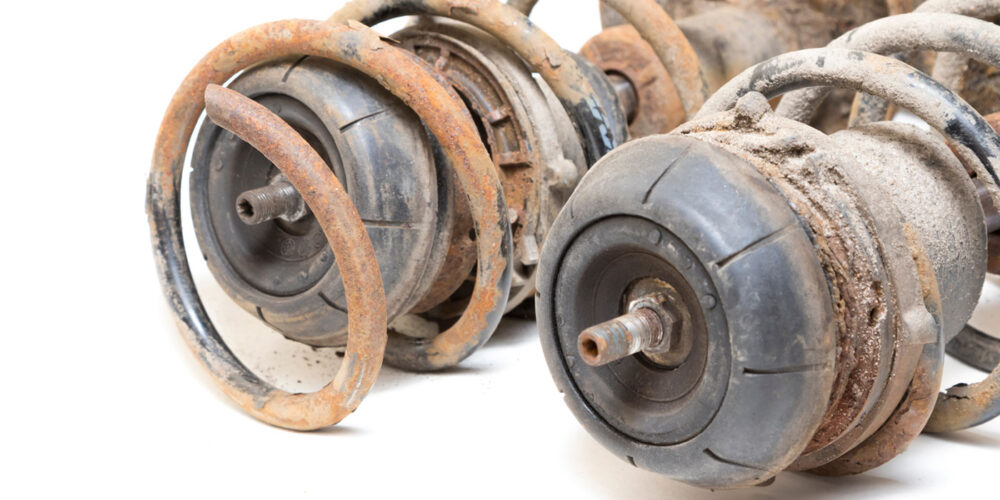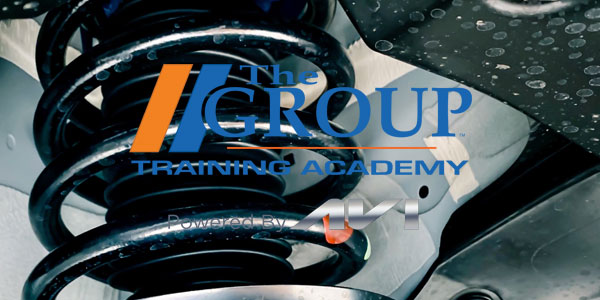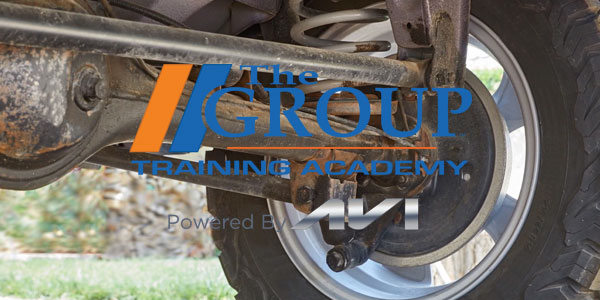A “road earring” is a term that can be used to describe a single coil found on the side of the road. These bits of broken spring have become more common in recent years.
A spring on a vehicle is an energy-storage and energy-transfer device. As the wheel and tire follow the road, the spring reacts to undulations in the road and movements of the body and chassis.
Spring Rate
Spring rate refers to the amount of weight that’s needed to compress a spring 1 inch. Some spring rates are linear, and their rate increases as the spring is compressed. For example, if you have a 100-pound-per-inch spring, the first inch of compression requires 100 pounds. For 2 inches of compression, it will require 200 pounds.
For progressive spring rates, the first inch of compression might require only 100 pounds. But, as the springs compress, the spring rate increases progressively. The next inch of compression might require 300 pounds.
To make a progressive spring, the windings on the spring change in diameter and pitch in specific areas of the spring. The softer spring rates that might handle small bumps in the road are placed at the ends of the spring. The coils in the center of the spring will have a stiffer spring rate to counteract larger movements of the suspension and body. But, this can induce fatigue in the areas designed to give a softer spring rate because it always yields to the forces in the suspension.
Spring Steel
Springs are made of steel called spring steel. This steel is medium- or low-carbon steel. It is engineered and forged, so it has no large inclusions or scale. As a result, the steel has a high yield point and can return to its original shape quickly when it does yield.
Once the spring steel has been delivered to the spring factory, the steel can be drawn, bent and heated into springs. The engineers can change the spacing and pitch of the coils to generate different spring rates. They also can change the geometry of the spring by making it a barrel shape that affects how side loads are absorbed.
How the spring is formed and treated can influence the spring rate as well. Unfortunately, progressive spring designs have one disadvantage: They can fatigue in specific areas. When this happens, the spring can break.
A spring’s design is tuned to many factors. Engineers will use terms like frequency and amplitude to describe spring construction. For the layman, these terms translate to how fast and how far the spring has to travel. Frequency and amplitude are tuned for ride quality, the vehicle’s center of gravity and the sprung and unsprung weight.
One area of the spring might be great for controlling body lean, but it could be too hard to provide a comfortable ride. To increase the versatility of the spring, engineers can tune the coils so they are progressive and change the spring rate when compressed or put under certain forces.
Why Do Springs Fail?
Spring steel at an atomic or molecular level is not a consistent structure. Depending on how the metal is cast, forged and bent, the molecular structure of the steel can have grain and microstructures that can change the properties and performance of the spring.
These tiny structures can change and even weaken the spring as it is cycled. These movements of the suspension cause the grain and microstructures to shear and eventually develop microscopic cracks. If the cracks grow larger during the following cycles, it can lead to structural failure of the spring.
Why Are Some Vehicles More Prone to Broken Springs?
Automakers want a suspension that delivers a plush ride over rough roads, and a sporty responsive feel when the driver takes a corner. The only way to achieve this is with progressive springs. But, some automakers might take it too far and compromise the longevity of the spring.
The other factor is how the suspension is cycled, which can be driver- and geography-dependent. For example, if a driver lives in an area with rough roads, the springs are more likely to fail when compared to the same vehicle that may drive only on smooth roads. The same also is true for the distance they drive.
The other factor is the condition of the shocks or struts. If a shock or strut cannot control the movement of the suspension, the spring will cycle more and with a greater range of movement. This can increase the rate of fatigue.
What Happens When a Spring Breaks?
If a spring breaks, it can cause multiple problems.
The first symptom is poor ride and handling. This is caused by unequal spring rates and changes in ride height. This will typically be accompanied by noise and the suspension bottoming out. On strut applications, missing coils can cause the steering to bind. Finally, in some cases, the broken spring can damage a tire and cause a sudden blowout.
Setting aside all of the science and engineering, you can see that springs are a wear component that need to be inspected. And you also must realize that even though a spring has no actual internal moving parts, it’s just as complex as a fuel injector or electronic module.













